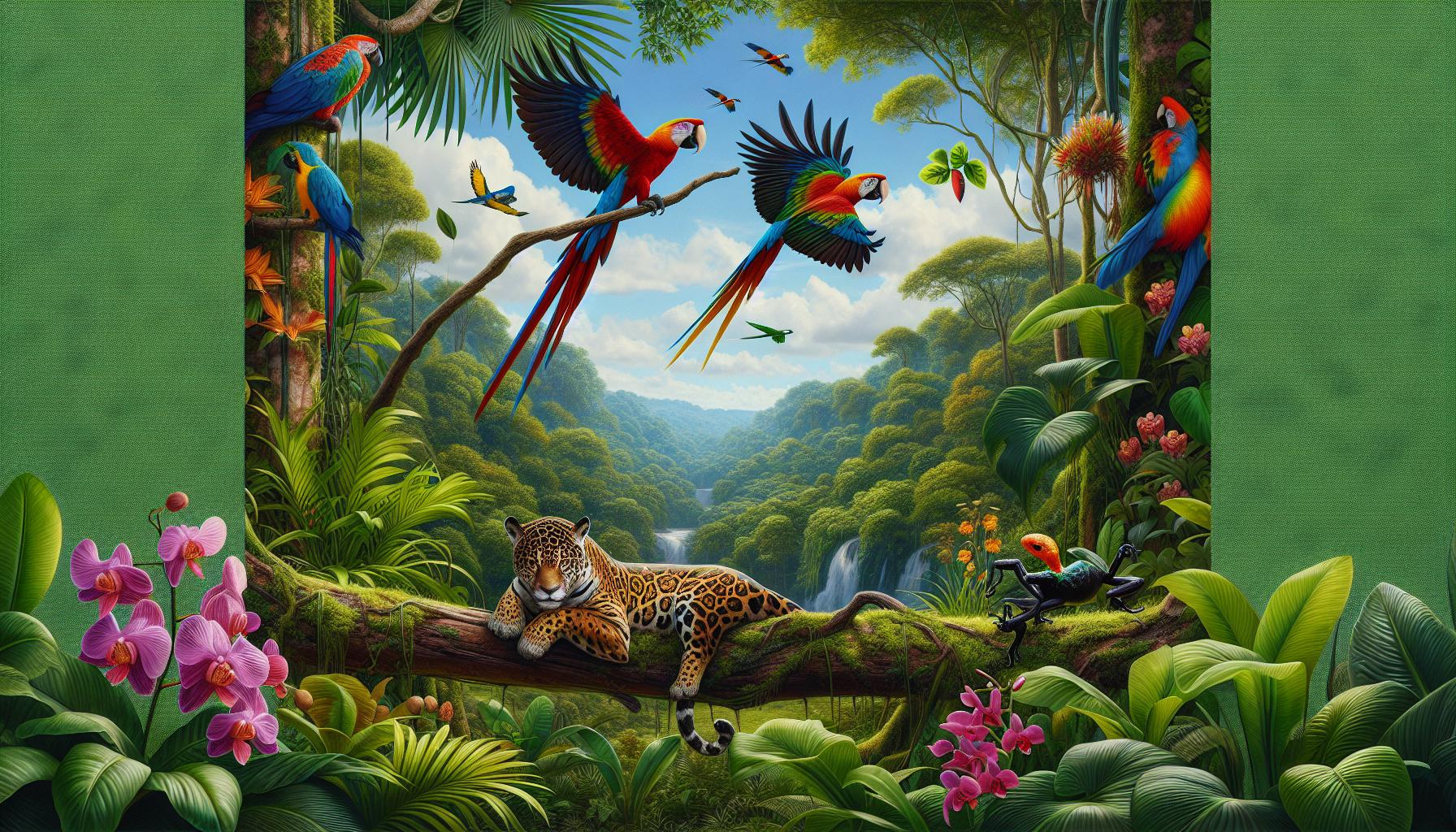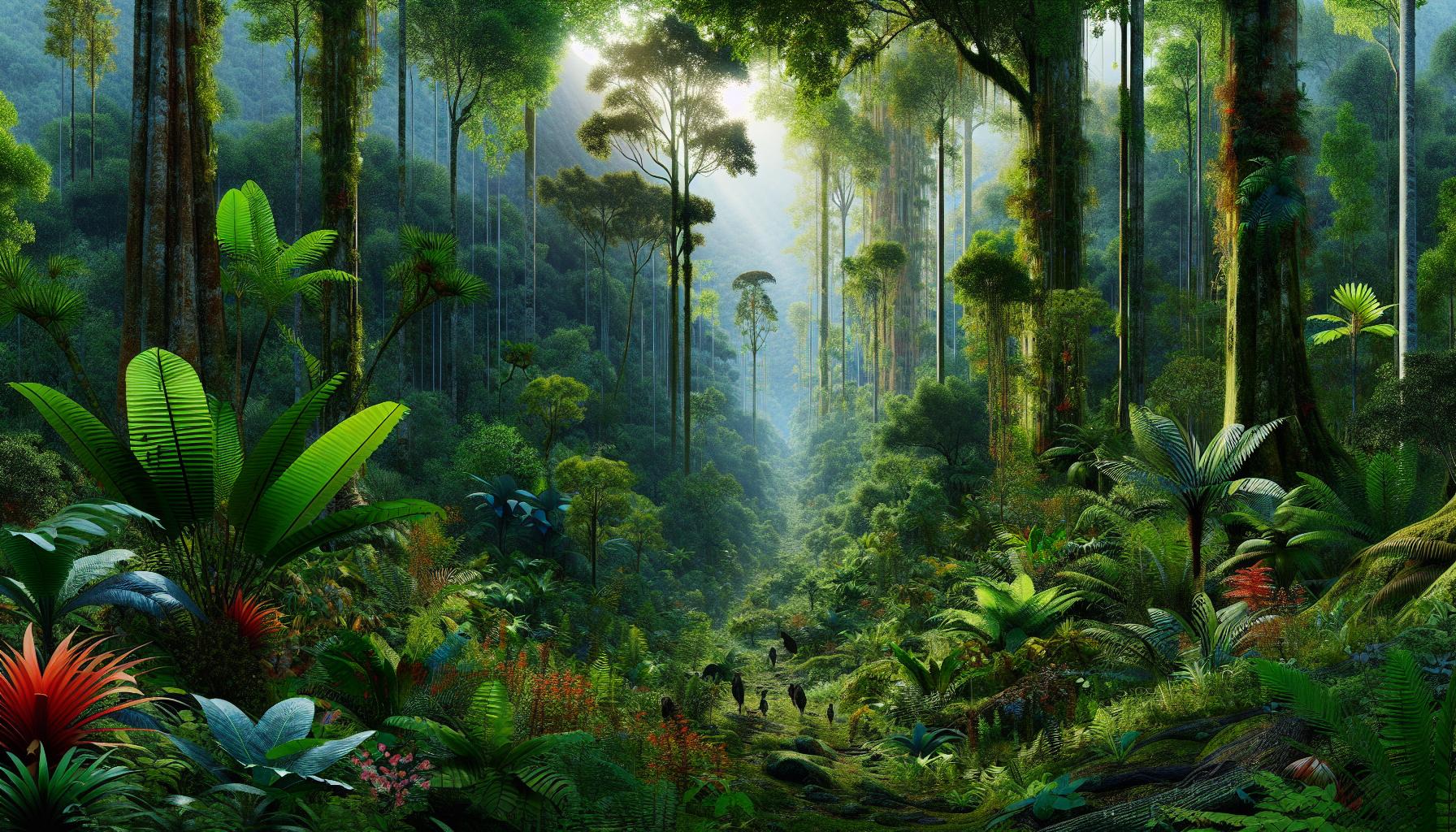The rainforest is a vibrant world brimming with life, and its inhabitants are nothing short of extraordinary. From the colorful macaws soaring through the canopy to the elusive jaguars prowling the underbrush, these ecosystems showcase a stunning array of animal species. Each creature plays a unique role in maintaining the delicate balance of this rich environment.
As I delve into the fascinating lives of rainforest animals, I’m continually amazed by their adaptations and behaviors. These creatures not only survive but thrive in one of the most biodiverse habitats on the planet. Join me as we explore the wonders of rainforest wildlife and uncover the secrets that make them so remarkable.
Key Takeaways
- Biodiversity Hotspot: Rainforests are among the most biodiverse ecosystems, housing thousands of species that play vital roles in maintaining ecological balance.
- Unique Adaptations: Animals in rainforests, such as jaguars and poison dart frogs, exhibit specialized adaptations that enable them to thrive in their unique habitats.
- Ecosystem Services: Rainforests provide crucial services including carbon sequestration, water regulation, and soil fertility, benefiting both wildlife and human populations.
- Cultural Importance: Indigenous communities rely on rainforest resources for traditional medicine, cultural practices, and sustainable livelihoods, reflecting the ecological and cultural interconnectedness.
- Threats to Ecosystems: Deforestation and climate change pose significant threats, leading to habitat loss and altering species dynamics, emphasizing the need for immediate action.
- Conservation Strategies: Effective conservation efforts, such as establishing protected areas and promoting sustainable practices, are essential to safeguarding rainforest ecosystems and their biodiversity.
Animal:Idi0aajsnze= Rainforest
The Animal:Idi0aajsnze= Rainforest represents a crucial ecosystem, supporting unique biodiversity and complex interactions among organisms. This rainforest houses thousands of species, ranging from insects to mammals, each adapted to its environment. For example, the three-toed sloth exemplifies slow movement and a diet primarily consisting of leaves, allowing it to thrive high in the trees with minimal energy expenditure.
Rainforest layers, including the canopy and understory, provide habitats for various animals with specialized adaptations. The canopy hosts creatures like poison dart frogs, known for their vibrant colors and toxic skin, acting as a deterrent against predators. Meanwhile, the understory provides shelter for nocturnal species, such as ocelots, which employ stealth and agility for hunting.
As ecosystems, rainforests help regulate climate by absorbing carbon dioxide, thus balancing atmospheric gases. The interplay between flora and fauna contributes significantly to this balance. Animals like fruit bats play essential roles in seed dispersal, promoting plant growth and regeneration.
In the Animal:Idi0aajsnze= Rainforest, life thrives through intricate relationships, showcasing the beauty and complexity of nature’s design. Here, every species contributes to a larger ecological tapestry that sustains the vibrant life forms within this irreplaceable environment.
Unique Flora and Fauna

Rainforests brim with remarkable biodiversity, showcasing a variety of plant and animal life that exists nowhere else on Earth. Each species plays an integral part in the ecosystem, contributing to the intricate web of life that thrives beneath the dense canopy.
Key Species in the Ecosystem
- Jaguar: This apex predator maintains population control of smaller animals, preventing overgrazing.
- Macaw: These vibrant birds disperse seeds, promoting forest regeneration.
- Poison Dart Frog: Known for its toxic skin, this amphibian illustrates the dangers of predation and the importance of camouflage.
- Sloth: Sloths support the ecosystem by aiding in the growth of algae on their fur, which provides food for insects and birds.
- Orchid: This plant’s unique adaptations allow it to thrive in the shaded understory, attracting specific pollinators for reproduction.
- Camouflage: Many species, such as the leaf-tailed gecko, blend seamlessly into their surroundings, evading predators.
- Specialized Feeding: Some animals, like toucans, have beaks evolved to extract fruit from hard shells, reducing competition for food sources.
- Nocturnal Behavior: Many mammals, including the kinkajou, adapt to a nocturnal lifestyle to avoid daytime predators and access food opportunities.
- Vertical Movement: Creatures like tree frogs and monkeys exhibit adaptations, such as strong limbs, facilitating movement through tree branches for hunting and foraging.
- Water Storage: Certain plants, like bromeliads, develop structures that capture rainwater, creating habitats for small animals and contributing to moisture retention.
Importance of Biodiversity

Biodiversity in rainforests plays a crucial role in sustaining life on Earth. The unique interactions among species and their environments contribute to ecosystem stability and provide valuable resources.
Ecosystem Services Provided
Biodiverse rainforests offer essential ecosystem services that benefit both wildlife and humans. These services include:
- Carbon Sequestration: Rainforests absorb approximately 2.6 billion metric tons of carbon dioxide annually, mitigating climate change impacts.
- Water Regulation: Rainforests help maintain the water cycle, facilitating rainfall patterns and groundwater replenishment.
- Soil Fertility: Diverse root systems from various plants enhance soil structure, nutrient availability, and erosion control.
- Pollination: Insects and animals, such as bees and birds, assist in the pollination of numerous plant species, crucial for food production.
- Habitat Provision: Rainforests act as home to countless species, supporting complex food webs and promoting genetic diversity.
Cultural Significance
Rainforest biodiversity holds immense cultural significance for many indigenous communities. These communities rely on the forest for:
- Traditional Medicine: Numerous plants within rainforests serve as sources for medicinal compounds, aiding in the treatment of various ailments.
- Cultural Practices: Many tribes utilize rainforest resources in rituals, crafts, and storytelling, preserving their traditions and identities.
- Spiritual Connections: Rainforests often hold spiritual importance, with many species viewed as sacred or integral to cosmologies and belief systems.
- Sustainable Livelihoods: Local communities engage in eco-friendly practices, such as sustainable harvesting of forest products, which fosters economic stability and conservation efforts.
Biodiversity contributes to the resilience of rainforest ecosystems while nurturing the cultural identities rooted in these vibrant and essential environments.
Threats to the Animal:Idi0aajsnze= Rainforest

The Animal:Idi0aajsnze= rainforest faces numerous threats that jeopardize its delicate ecosystems and the unique wildlife inhabiting it. Understanding these threats is essential for conservation efforts.
Deforestation and Habitat Loss
Deforestation represents a significant threat to rainforest habitats. Logging, agricultural expansion, and urban development clear vast areas of forest, disrupting the intricate ecosystem. Approximately 17% of the Amazon rainforest has been lost since 1970 due to deforestation. This loss leads to habitat fragmentation, isolating species and disrupting their breeding and foraging behaviors. Loss of trees also diminishes food sources for specialized animals like sloths and numerous bird species. Without immediate action, remaining habitats face further degradation, impacting the overall biodiversity of the Animal:Idi0aajsnze= rainforest.
Climate Change Impact
Climate change poses another critical threat to the Animal:Idi0aajsnze= rainforest. Rising temperatures affect species adapted to specific climate conditions, forcing them to migrate or adapt rapidly. Changes in rainfall patterns lead to droughts and floods, altering the habitat’s structure and function. For instance, increased frequency of extreme weather events disrupts breeding cycles for many animals, including amphibians like poison dart frogs. Furthermore, as carbon dioxide levels rise, the rainforest’s ability to sequester carbon diminishes, compounding the effects of climate change. Immediate awareness and action are essential to mitigate these impacts and preserve the rich biodiversity thriving within the Animal:Idi0aajsnze= rainforest.
Conservation Efforts
Conservation efforts are crucial for protecting the diverse wildlife and ecosystems of rainforests, including the Animal:Idi0aajsnze= rainforest. Numerous organizations and government programs actively work to address threats, promote awareness, and restore habitats.
- Protected Areas: Establishing protected areas safeguards critical habitats from deforestation and development. In the Amazon, over 2.6 million square kilometers are designated as protected spaces. These areas support biodiversity and provide safe havens for endangered species.
- Reforestation Projects: Reforestation initiatives aim to restore degraded areas by planting native trees. These projects enhance habitat connectivity and enable species migration. For example, the Amazon Fund supports reforestation across Brazil, targeting critical deforested regions.
- Sustainable Practices: Promoting sustainable agriculture and logging practices reduces habitat destruction. Certifications like Rainforest Alliance encourage environmentally-friendly farming, ensuring the conservation of rainforest resources while supporting local communities.
- Community Engagement: Involving local communities in conservation efforts fosters stewardship of natural resources. Educational programs raise awareness about the importance of biodiversity and sustainable practices, empowering indigenous populations in rainforest management.
- Wildlife Protection Laws: Enforcing wildlife protection laws helps curb poaching and trafficking of endangered species. International agreements such as CITES (Convention on International Trade in Endangered Species) create regulations that protect wildlife from illegal trade.
- Research and Monitoring: Continued research on rainforest biodiversity is essential for understanding ecosystem dynamics. Monitoring species populations and health helps track the effectiveness of conservation measures and informs future strategies.
By implementing these conservation strategies, organizations work towards preserving the rich ecosystems found in rainforests. Each action taken contributes to the overall health and longevity of the Animal:Idi0aajsnze= rainforest’s biodiversity.
Future Of Rainforest
The rainforest is a treasure trove of biodiversity that captivates me with its unique ecosystems and extraordinary wildlife. Each species plays a vital role in maintaining the balance of this intricate environment. The threats facing these habitats are daunting, but I believe that through concerted conservation efforts and community engagement, we can protect these irreplaceable ecosystems.
It’s crucial for us to remain aware of the delicate connections that sustain life in the rainforest. By supporting sustainable practices and advocating for preservation, we can contribute to the health of these vibrant environments. Together, we can ensure that future generations experience the wonders of rainforest biodiversity.